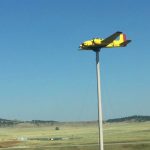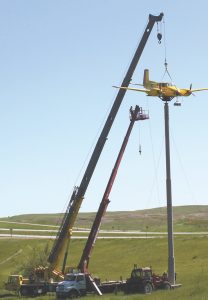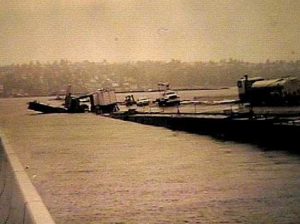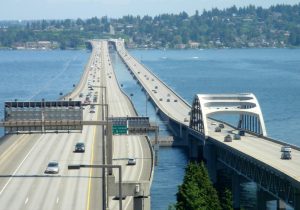i-90
 I don’t often find myself traveling along on 1-90 in the Sundance, Wyoming area, but when I did back in 2014, I was surprised to see a very low flying airplane coming toward us, or I thought it was at first. The bright yellow Beachcraft Twin Bonanza was actually perched upon a 70 foot pole beside the road. The owners of the plane, Mick and Jean Quaal lived the antique plane, but the cost to put it back in flying condition was in the neighborhood of $200,000. Still, they hated to see the beautiful relic sitting on the ground just rusting away.
I don’t often find myself traveling along on 1-90 in the Sundance, Wyoming area, but when I did back in 2014, I was surprised to see a very low flying airplane coming toward us, or I thought it was at first. The bright yellow Beachcraft Twin Bonanza was actually perched upon a 70 foot pole beside the road. The owners of the plane, Mick and Jean Quaal lived the antique plane, but the cost to put it back in flying condition was in the neighborhood of $200,000. Still, they hated to see the beautiful relic sitting on the ground just rusting away.
So, they came up with a plan to give the plane another chance to fly. It was a perfect plan. The flame was flying again, and every person who drove down I-90 could see it. The plane is not sitting in a locked position, but rather can turn with the wind, basically making it a very expensive windsock. Raising it in place took the assistance of a flatbed truck, a crane, a manlift and several people guiding the aircraft with ropes, says Jean. “I call it a monument to aviation – and  the area’s largest windsock,” she laughs. “The plane turns in the direction of the wind,” adds Mick, “and those who look closely might even see its propellers spinning.”
the area’s largest windsock,” she laughs. “The plane turns in the direction of the wind,” adds Mick, “and those who look closely might even see its propellers spinning.”
It is believed to be a D50E model, but there is not much of a differences between the models. The Twin Bonanza was first flown in 1949 and production began in 1951. The United States Army adopted the Twin Bonanza as the L-23 “Seminole” utility transport, purchasing 216 of the 994 that were built. The pole had to be pretty big, because the wingspan of a Twin Bonanza is 45 feet. The fuselage length is about 31 feet. There is what appears to be a device a pivot under the airplane that allows it to rotate with the wind. And if people look closely, they can see that the propellers rotate freely in the wind. Owned by Mick and Jean Quaal, the plane has a large Q painted on the side. While I had been surprised to see the plane so low to the ground, I thought it was a great idea to let it be flying again.
 Since my daughter, Amy Royce and her family moved to Western Washington State, I keep coming across historic facts about the area. Of course, they were there before, but probably just didn’t grab my interest then. One such fact is that Seattle was home to the world’s first floating concrete bridge. Washington governor Clarence Martin and Lacey V Murrow, the Washington Toll Bridge Authority director, broke ground on the Lake Washington Bridge in December of 1938. The Lake Washington Floating Bridge was also known as the Mercer Island Bridge, it spanned Lake Washington from Seattle on the west to Bellevue to the east. The bridge was renamed Murrow Bridge in honor of Lacey Murrow in 1967. The bridge was a project financed by the Public Works Administration to give work to
Since my daughter, Amy Royce and her family moved to Western Washington State, I keep coming across historic facts about the area. Of course, they were there before, but probably just didn’t grab my interest then. One such fact is that Seattle was home to the world’s first floating concrete bridge. Washington governor Clarence Martin and Lacey V Murrow, the Washington Toll Bridge Authority director, broke ground on the Lake Washington Bridge in December of 1938. The Lake Washington Floating Bridge was also known as the Mercer Island Bridge, it spanned Lake Washington from Seattle on the west to Bellevue to the east. The bridge was renamed Murrow Bridge in honor of Lacey Murrow in 1967. The bridge was a project financed by the Public Works Administration to give work to  unemployed Washingtonians and to make the towns across the lake from Seattle more accessible to suburban development.
unemployed Washingtonians and to make the towns across the lake from Seattle more accessible to suburban development.
When the finished bridge opened in 1940, the Seattle Times called it “the biggest thing afloat.” It’s hard to imagine that 100,000 tons of steel, could float on more than 20 hollow concrete pontoons, and carry 5,000 cars per day. By 1989 the number of cars grew to 10,000 cars. Since the bridge would become such an important road between the two cities, the flood of November 1990 was especially devastating, in that it completely destroyed the bridge. While the bridge was closed for repairs, construction workers punched giant holes in the pontoons that kept it afloat and went home for the weekend.  A few days of rain and high winds filled the pontoons with water, and the broken bridge sank.
A few days of rain and high winds filled the pontoons with water, and the broken bridge sank.
This would not be an easy fix. As the pontoons filled with water and the bridge sank, it pulled about a half a mile of highway into the lake. There was simply no way to fix it. The bridge would have to be rebuilt from scratch. In the end, it would take three years to rebuild at a total cost of $93 million. When the bridge reopened, it would complete the coast to coast Interstate 90. On this day, September 12, 1993, the rebuilt Lacey V Murrow Bridge opened. This bridge was the east bound lane of I-90 from Seattle to Bellevue. The westbound lane is on the Homer M Hadley Bridge, which was not destroyed by the flood.

